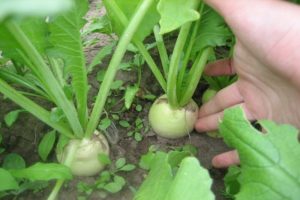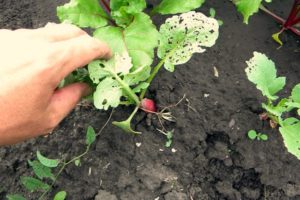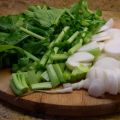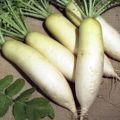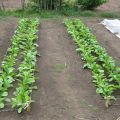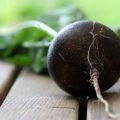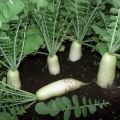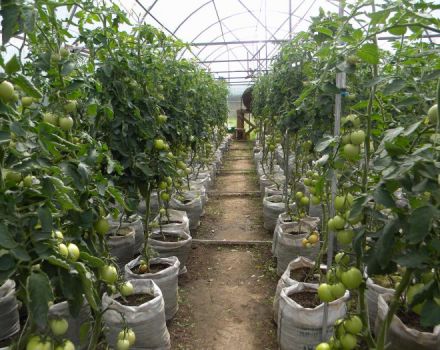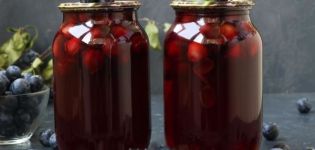When you need to harvest daikon radish from the garden for storage for the winter
In winter, vitamins, fiber and other beneficial trace elements are available in fresh fruits from the garden, provided that the harvest is correctly collected and then placed. In order for the roots to remain strong and juicy for many months, it is important to know when the daikon radish is removed from the garden for storage.
The vegetable has a small amount of calories; it is consumed fresh or added during cooking to dishes.
Japanese radish has the following positive qualities:
- improving the activity of the gastrointestinal tract;
- antiseptic properties;
- help in cleansing the liver and kidneys.
Collecting daikon for storage
The crop is harvested when cool and dry weather sets in, but frosts have not yet come, because sub-zero temperatures damage the ground part of root crops and you will have to forget about long-term storage. You should not overexpose them in the ground, otherwise voids will form inside, and the pulp will lose its taste and become tough.
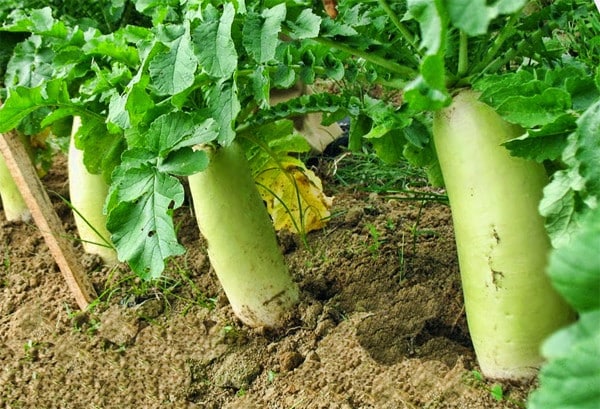
If the radish has grown on heavy soil, you cannot pull the tops when harvesting, because of this, the root system breaks easily.
It is recommended to scoop up vegetables with a shovel or pitchfork.
After the daikon is completely removed from the beds, it is necessary to put the fruits in the air to dry the earth remaining on them. In order not to damage the thin skin, it is not recommended to wash and clean the harvested vegetables; it is only permissible to shake off the remaining soil from them slightly. It is necessary to protect the radish from the sun's rays, as it becomes flabby from them.
Storing daikon
Before placing vegetables for the winter, the entire radish harvest is moved and examined. Fruits left for long-term storage should be even, smooth, not damaged. The tops are carefully cut with scissors.
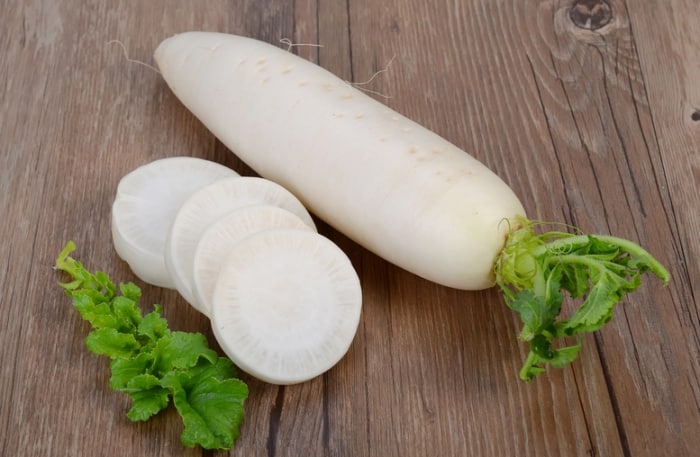
How to store daikon correctly? There are several ways to do this.
In the cellar
Placing radish in basements and cellars is one of the best solutions. After all, it is there that optimal conditions for vegetables are created. Root crops that are harvested in the last days of September - early October are preserved the longest.
Before harvesting, wooden boxes are purchased or made independently, then they are engaged in sifting coarse river sand.
Vegetables are carefully inspected before long-term storage. Root crops with damaged skins and signs of decay are immediately eliminated. A small spot on the surface of a different shade is a clear indication of the beginning of product deterioration. Such a radish will not be able to last even 1 month, but it will easily destroy the crop, as it is a source of bacteria.
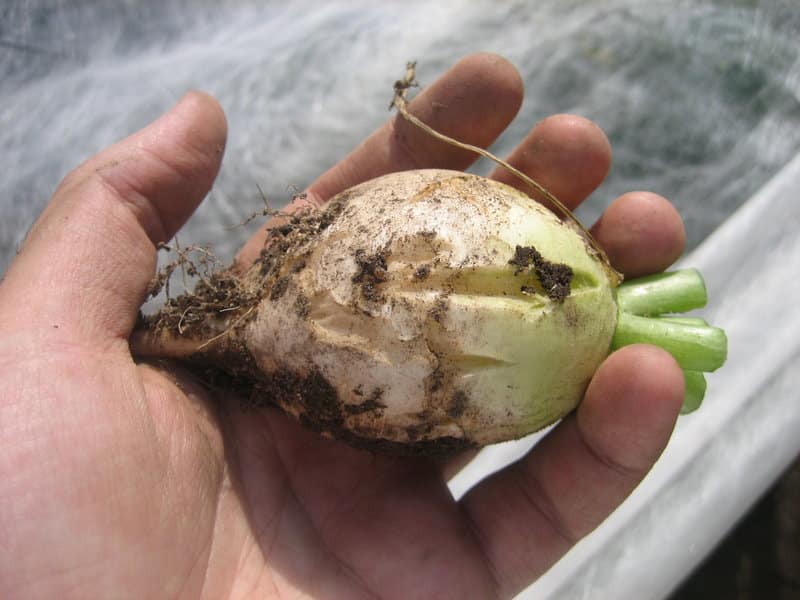
Daikon is laid in even layers and covered with abundantly wet sand. It is important that the roots only touch the sand, not each other. The boxes are stored at a temperature of + 1 ... + 5 degrees. Humidity should be around 70–90%.
Ideal conditions for storing daikon are a stable temperature regime, no sunlight, maintaining moisture in the boxes (periodic moistening of the sand will help to achieve this).
Dry sand is able to draw moisture out of the radish, thereby damaging the crop.
The Japanese daikon in cellars is perfectly preserved next to carrots and fodder beets.
In a refrigerator
Many gardeners grow daikon in small quantities. They have several root crops in the composition of the crop, which can be saved at home in the kitchen. Each radish is wrapped in an air-permeable bag. You can make holes on it with a fork. All vegetables are stacked on the bottom shelf in the refrigerator. This way of storing daikon, you can achieve freshness of vegetables for three to five weeks.
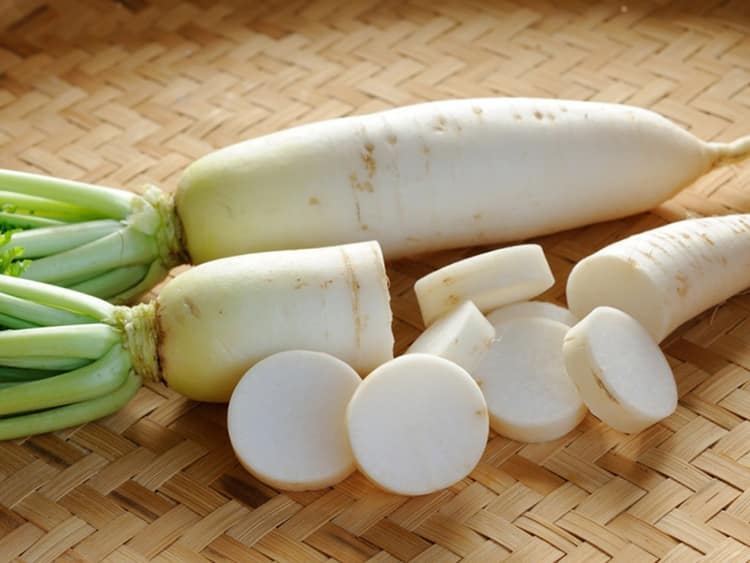
Attention! Before placing the radish in the refrigerator, do not wet it, let alone wash it. After all, this will quickly ruin the harvest. Root crops can be dried and lightly cleaned of soil residues. Of course, fruits with damaged skins are eaten immediately, they cannot be stored for a long time.
Freezing
Daikon keeps well until next summer in the freezer. To do this, the root crops are cut or ground on a coarse grater. If it is small, then the radish will secrete juice, and as a result, a frozen ice lump will turn out, which will then be problematic to eat.
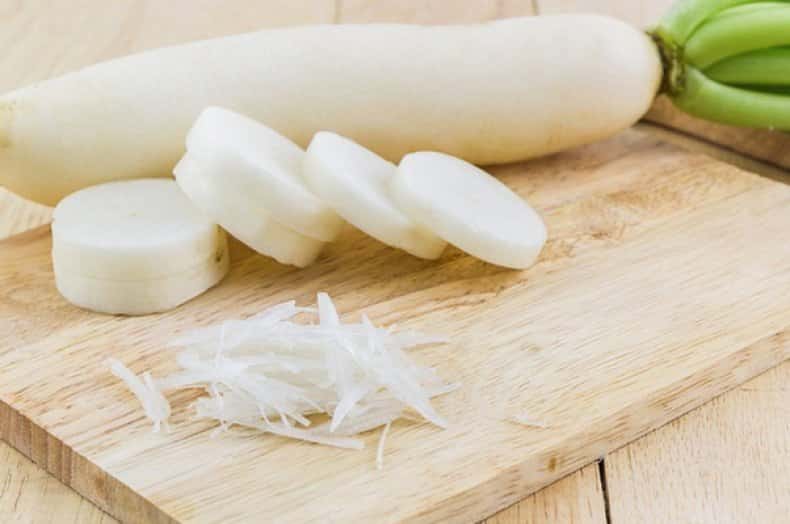
Pre-crushed daikon is placed in small portions in plastic bags or special plastic containers. All this is placed in the freezer.
When the radish is needed, it is taken out and thawed at room temperature before use.
Important! This method allows you to preserve beneficial trace elements in the fruit. If the thawed daikon is removed to the freezer again, then such a vitamin-rich product will become a tasteless sluggish mass devoid of any benefit.
Conservation
Daikon can be used to make snacks and put them in jars for the winter. Usually a salad is made from fresh root vegetables and carrots. Ingredients in the form of vegetables and seafood are added to it.
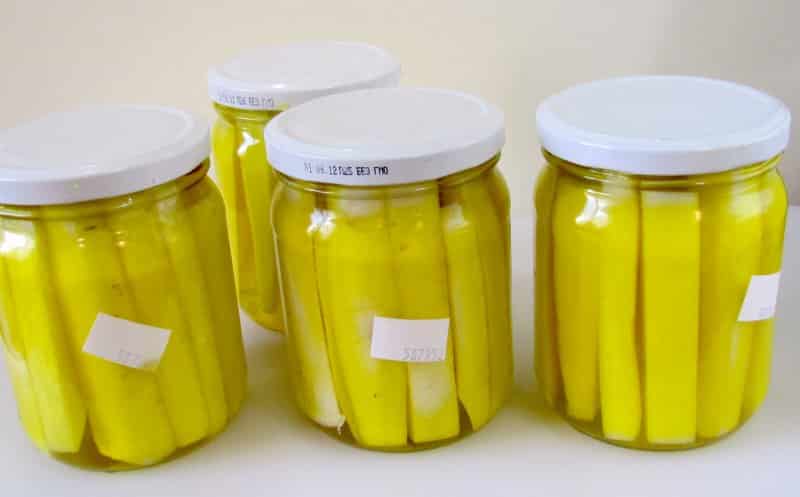
The gas station is selected independently to choose from:
- vegetable oil;
- mayonnaise;
- oil-lemon.
The preparation of a snack begins with grinding the daikon, it can be rubbed on a coarse grater or cut into cubes. The radish is mixed with carrots, then everything is poured with marinade and hermetically tightened with a lid. Banks are kept in cool places.
For the marinade, you will need the following ingredients:
- water;
- vinegar;
- salt;
- sugar;
- pepper;
- fragrant herbs.
The resulting mixture is brought to a boil, then cooled. These pickled vegetables serve as a base for winter salads, as an independent dish, or are added to meat.

You can make a harder marinade for the daikon. First, apple cider vinegar and rice vinegar are mixed, then lemon zest, turmeric, garlic and a hot seasoning of your choice are added. The fruits are cut into rings or half rings. This appetizer will please the household and will surprise the guests.
Radish juice
The juice contained in daikon is incredibly useful, it retains all the trace elements from the root vegetable. People whose stomachs are irritated by the fiber in the radish can drink this juice and not be afraid of the consequences.

If it is not possible to preserve root crops for a long time or the crop is damaged during harvesting, harvesting daikon juice for the winter is the best way to process excess vegetables.
With the help of a juicer, a drink is prepared, which is poured into sterilized glass jars or bottles.The container with juice is pasteurized in a water bath for half an hour. Then all containers are tightly closed with lids and placed in cool dark places for storage.
Japanese radish is a very tasty and healthy vegetable. It contains a large amount of vitamins and minerals. If the harvest is rich and you can't eat everything at once, there are several ways to keep the roots fresh for many months. Thanks to this, the benefits of daikon are not lost, and the taste remains great.
